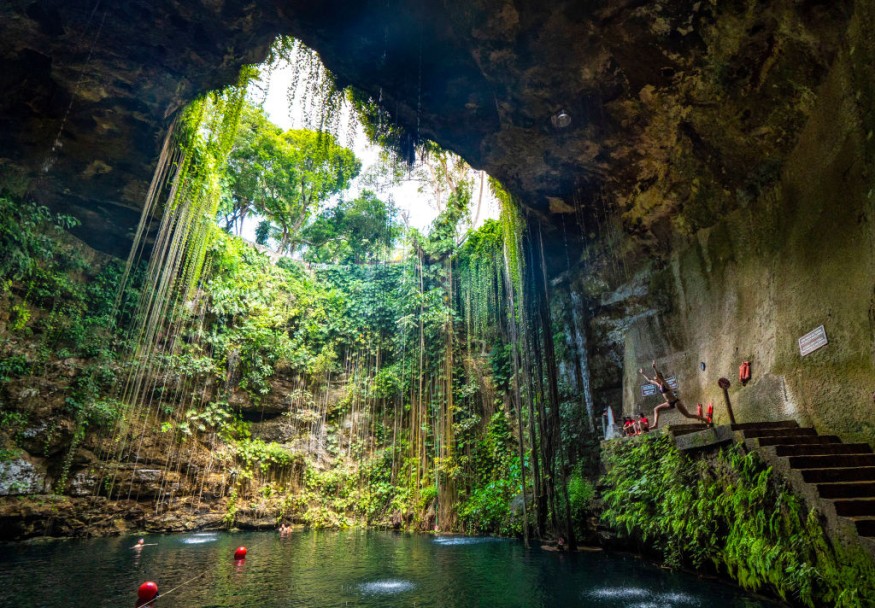Mysterious Handprints Discovered in Ancient Mayan Cave in Mexico

After exploring a subterranean cavern, an archeologist found more than 100 black and red handprints on the walls of the ancient Mayan cave in Mexico's Yucatan peninsula.
The 137 prints, mostly made by children's hands, are believed to be associated with a coming-of-age ritual of the ancient Maya and have been determined by archaeologists to be more than 1,200 years old.
According to Mexico Daily News, archeologist Sergio Grosjean found the handprints in a cave close to the northern tip of the Yucatan peninsula.
The date of the handprints corresponded near the end of the ancient Maya's classical zenith, when humans were achieving major advances in art and math.
The cave where the handprints were found is about 10 meters below a large ceiba tree, which is considered sacred by ancient Mayan people. It is also located where the towering pyramids of urban centers like Uxmal and Chichen Itza still stand.
Chichen Itza is known for its magnificent monuments, including the pyramid El Castillo, the Temple of Warriors, and the Great Ball Court.
The Maya city of Chichen Itza was founded around the sixth century A.D, and it remains an active archeological site until now. It was thought to have been a religious, political, military, and commercial center that would have been home to 35,000 people at its peak.
Grosjean, who explored and studied the cave, believed that children likely make the handprints as they entered puberty, Reuters reported.
Grosjean further noted that ancient Mayan people imprinted their hands on the walls in black to symbolize death. However, he said it did not mean that they would be killed, but rather death from a ritual perspective.
He added that children who imprinted their hands red could be linked to life or war.
More Mayan Artifacts
Aside from the handprints and other markings, several Mayan artifacts have also been found inside the cave. Among them were a carved face and six painted relief sculptures.
The sculptures, which can be date back from between 800 and 1,000 A.D., were made when the Mayan region was experiencing a severe drought that may have caused inhabitants to suddenly abandon major cities, Ancient Origins reported.
Grosjean was also a part of a team of archeologists who discovered a treasure trove of Mayan cave paintings in the east of Yucatán state in 2018. The said cave also has handprints on its walls.
At the time, Grosjean noted that it was not the only cave with paintings in Yucatán, but it was the most important because they have many elements like birds, a cross, mammals, human forms, geometric figures, a figure of a warrior, and also handprints from front and back.
The first Mayan settlements date back close to 4,000 years ago. During that time, there were still large centers when Spanish conquerors arrived in the early 1500s.
Millions of Mayans continue living in communities scattered across southeastern Mexican states like Chiapas and Campeche, aside from Guatemala and Belize.
READ MORE : Mexico's Famed Aztec Temple Damaged in Storm
WATCH: Ancient Maya Cave Reveals Mysterious Handprints - From Reuters
Subscribe to Latin Post!
Sign up for our free newsletter for the Latest coverage!
















